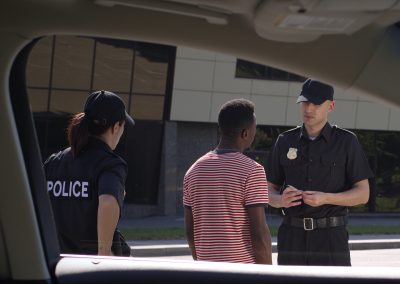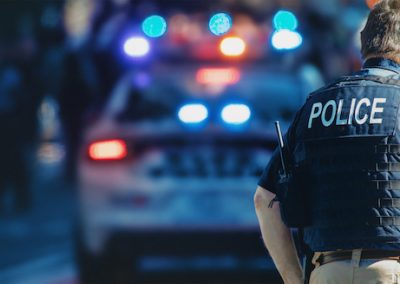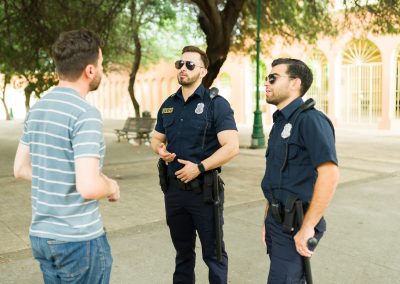[Publisher’s Note: This article was originally published in the Spring 2015 issue of the National Tactical Officers Association’s professional journal, The Tactical Edge, and is reprinted with permission. www.NTOA.org]
The use of video recording devices is not new to the law enforcement profession, nor is it new to the community members with whom we interact. But in decades past, mobile video recording devices were bulky, expensive and often complex to operate. Both the public and law enforcement agencies were slow to use them en masse. As the technology improved, however, devices became more compact, intuitive and affordable. Newer video media formats allow data to be stored and shared freely among users. And thus we have found ourselves in a time where few law enforcement officers have not heard the cautionary statement from a trainer or supervisor: “Assume that you are always being video recorded.”
So what has changed in the last year? Everything!
First, it’s important to recognize that 90% of Americans own a cell phone and 58% own a smart phone, all of which are likely capable of capturing video.1 Smart phones, of course, allow the user to upload content (like video) instantaneously, which is important considering that 74% of technology-savvy adults utilize some form of social media.2 With approximately 800,000 sworn law enforcement officers in the United States3 generating hundreds of thousands of officer-citizen contacts daily, it is almost inconceivable to think that many of those contacts are not already being recorded by the public. So the potential for having your actions recorded is always there.
What changed in 2014 is not what the public is recording, it is why they are recording. The events surrounding the Michael Brown and Eric Garner cases reignited the national discussion on body-worn cameras. In the past, it was a discussion that some in our profession embraced and some avoided. But the increase in citizen-generated video and the call for more body-worn cameras (BWC) are motivated by the same central theme — a mistrust of law enforcement.
At the peak of the event in Ferguson, Missouri, the national media, in large part, implied that very few law enforcement officers could be trusted, and that one of the most viable solutions to this was more BWCs. There was very little discussion about the hundreds of thousands of daily citizen officer contacts that are largely positive and do not result in any type of use-of-force or complaint on the officer’s behavior. Despite that, the spark ignited on the national BWC discussion and continues to burn.
There is no doubt that there is much work to be done in some communities on reestablishing legitimacy in policing and racial relations, as well as educating community members on law enforcement operations. But the success or failure of those efforts will not alter the outcome of the discussion surrounding BWCs.
We have reached a point in this country where the public we serve now expects this. Even those members of the public who have been the most ardent supporters of law enforcement have a difficult time arguing against the use of BWCs. The only rational argument against their use, at this point, is the cost that will be passed on to the taxpayer and potential privacy infringement issues that could occur, absent appropriate policy controls and procedures.
Questions to Consider
If your agency decides not to implement a BWC program, you will at a minimum have to publicly explain why. If you chose to only implement it for a portion of your agency or only during certain types of interaction with the public, you still will have to explain why. But if your agency chooses to fully implement an agency-wide program, consider the following questions.
• Do your tactical officers use the same BWC for patrol operations as they do for SWAT? Or do they use another device? Are the procedures for use the same?
• If your tactical team uses any type of device that views video, such as pole cameras, robots, UAVs, canine cameras, etc., can you record it?
• Are you prepared to store, redact and share that data the same way you do for your BWCs?
• Will your tactical officers have the ability to review video prior to authoring an after-action report?
• Are you prepared for the public to see the way your tactical operators behave?
By now, you have likely been engaged in such discussions with the public, your peers or at a command decision-making level. While the bulk of these discussions have likely focused on the use of BWCs by patrol officers, we cannot underestimate the impact any decision related to BWCs will have on an agency’s tactical operations. If the expectation of the public is that BWCs will improve professionalism, increase transparency and reduce illegitimate complaints against patrol officers, why wouldn’t there be the same expectation for officers operating in a tactical environment? More importantly, why wouldn’t we want that as well? What is it we are doing in tactical operations that we don’t want people to see?
Conclusion
Clearly, true operational security issues would be one of the few exceptions, but we should be careful not to overuse that justification while at the same time posting videos and pictures of training and operations on social media sites. We should also realize that many individual state public records laws will require that we disclose certain information.
In any case, law enforcement decision-makers need to have frank discussions about the impact on their operations, and more importantly, should be prepared to articulate their rationale for or against BWCs in tactical operations.
Endnotes
1. http://www.pewinternet.org/fact-sheets/mobile-technology-fact-sheet/
2. http://www.pewinternet.org/fact-sheets/social-networking-fact-sheet/










0 Comments